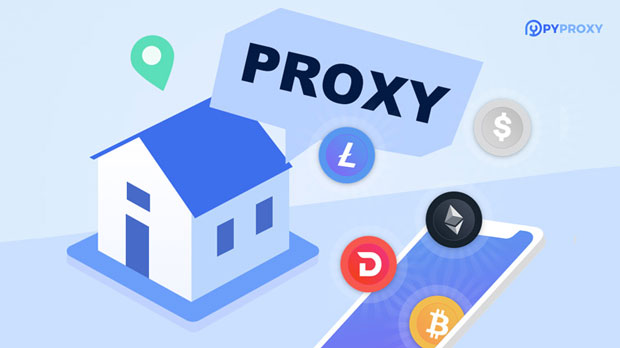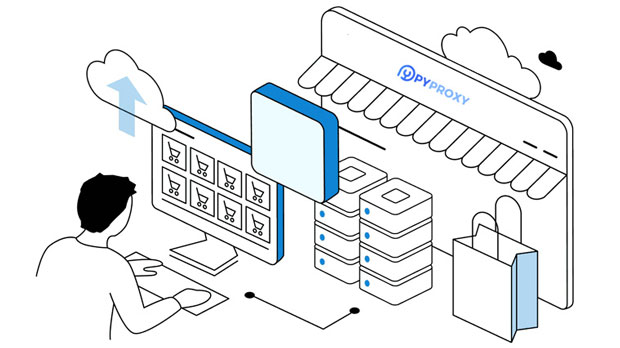In today's digital age, many people face restrictions when trying to access certain websites, whether due to geographical limitations, censorship, or network security measures. Two common tools that people use to bypass these restrictions are Web Unblock Sites and ProxySites. Although both tools aim to provide users with a way to access blocked content, they operate in different ways and serve slightly different purposes. This article will compare and contrast the two, offering a clear analysis of their functionalities, advantages, and potential drawbacks. 1. What is a Web Unblock Site?A Web Unblock Site is an online tool or service that helps users access blocked websites by acting as an intermediary between the user and the website they want to visit. These services typically function by disguising the user's IP address, thus making it appear as though the user is browsing from a different location or network. Web Unblock Sites are particularly popular for bypassing government-imposed restrictions or content filters set by schools, workplaces, or public networks.How Web Unblock Sites WorkWeb Unblock Sites use a simple process to unblock websites. When a user enters the website they want to access into the unblocker tool, the service fetches the requested site on behalf of the user and then displays it through their platform. The user interacts with the website indirectly, without directly connecting to it. This type of service hides the user’s real IP address and assigns them a temporary one, allowing access to blocked or restricted content.Advantages of Using Web Unblock Sites- Easy to Use: Most Web Unblock Sites do not require any additional software or technical expertise. Users can simply visit the unblock site and input the URL of the restricted website.- Privacy and Anonymity: Web Unblock Sites often mask the user’s identity, offering some level of privacy and anonymity when browsing.- No Installation Required: These services are web-based, meaning there is no need to download or install any software on the user’s device.- Fast Access: Many Web Unblock Sites offer relatively fast access to blocked websites.Limitations of Web Unblock Sites- Limited Functionality: Some Web Unblock Sites may not support complex website functions such as videos or interactive content.- Potential Security Risks: While Web Unblock Sites help users bypass restrictions, they may expose users to potential security risks if they are not properly secured.- Access Issues: Some sites may block users from accessing content through Web Unblock Sites, limiting their effectiveness.2. What is ProxySite?ProxySite, on the other hand, is a type of proxy server designed to help users hide their identity and access restricted content by routing their internet traffic through a third-party server. ProxySites generally allow users to browse the internet with greater flexibility, including accessing blocked websites, hiding their real IP address, and bypassing regional restrictions. How ProxySites WorkProxySites operate similarly to Web Unblock Sites but provide more advanced features. A user connects to a ProxySite, which serves as an intermediary between the user and the website they wish to visit. The ProxySite routes the user’s internet traffic to the desired site, hiding the user’s IP address and location in the process. Unlike Web Unblock Sites, ProxySites can offer more advanced features such as encrypted connections and enhanced security.Advantages of Using ProxySites- Enhanced Security: ProxySites often encrypt data, providing a more secure connection compared to Web Unblock Sites. This makes them more suitable for privacy-conscious users.- Customizable Features: Many ProxySites offer more configuration options, allowing users to adjust settings like IP location, browser type, and encryption protocols.- Bypass Geo-restrictions: ProxySites are effective at bypassing geo-restricted content, such as accessing content from a different country or region.- Better Privacy Protection: By masking the user’s IP address and routing traffic through a secure server, ProxySites offer better protection against surveillance and data tracking.Limitations of ProxySites- Requires Configuration: Unlike Web Unblock Sites, ProxySites may require more advanced configuration, making them harder for casual users to set up.- Potential Slower Speeds: Since ProxySites route internet traffic through an additional server, they may sometimes result in slower browsing speeds compared to direct connections.- May Not Support All Content Types: Some ProxySites may not support certain types of content, such as media streaming or heavy interactive content, due to bandwidth or server limitations.3. Comparing Web Unblock Site vs. ProxySiteWhile both Web Unblock Sites and ProxySites are designed to help users bypass restrictions and maintain privacy online, they differ in several key aspects. Let’s break down the comparison:Ease of UseWeb Unblock Sites are generally more user-friendly and do not require any setup or technical knowledge. Users simply visit the website, enter the URL of the blocked site, and are able to access the content. ProxySites, however, may require a bit more technical expertise to configure and use effectively. Some ProxySites may also require the installation of a browser extension or additional software.SecurityWhen it comes to security, ProxySites have the edge. They often offer stronger encryption and more robust security protocols compared to Web Unblock Sites, which may leave users more vulnerable to potential cyber threats. Web Unblock Sites, however, do provide a basic level of privacy, but they do not offer the same level of protection as ProxySites.Speed and PerformanceWeb Unblock Sites tend to provide faster browsing speeds since they typically offer a simpler service that doesn’t involve routing traffic through additional servers. ProxySites, while providing more secure and flexible features, may sometimes result in slower speeds due to the added complexity of routing traffic through a proxy server.Support for Advanced FeaturesProxySites generally support more advanced features such as encryption, server location customization, and better geo-restriction bypassing. Web Unblock Sites are usually limited to basic website unblocking and may not support advanced features like secure browsing or the ability to change server locations.Which One Should You Use?Choosing between a Web Unblock Site and ProxySite depends on the user’s specific needs and technical proficiency. If you are looking for a quick and easy solution to unblock websites without installing software or dealing with configurations, a Web Unblock Site is the better choice. However, if you require a more secure, flexible, and feature-rich solution, a ProxySite may be more suitable.ConclusionIn conclusion, both Web Unblock Sites and ProxySites serve valuable functions for internet users looking to bypass restrictions and maintain privacy. Web Unblock Sites offer a simple, fast, and user-friendly solution, but with limited features and security. ProxySites, on the other hand, provide enhanced security, customization, and the ability to bypass geo-restrictions, but they require more technical knowledge and can result in slower browsing speeds. Understanding the differences between the two tools will help you choose the right one for your specific needs.
Jul 11, 2025


































































